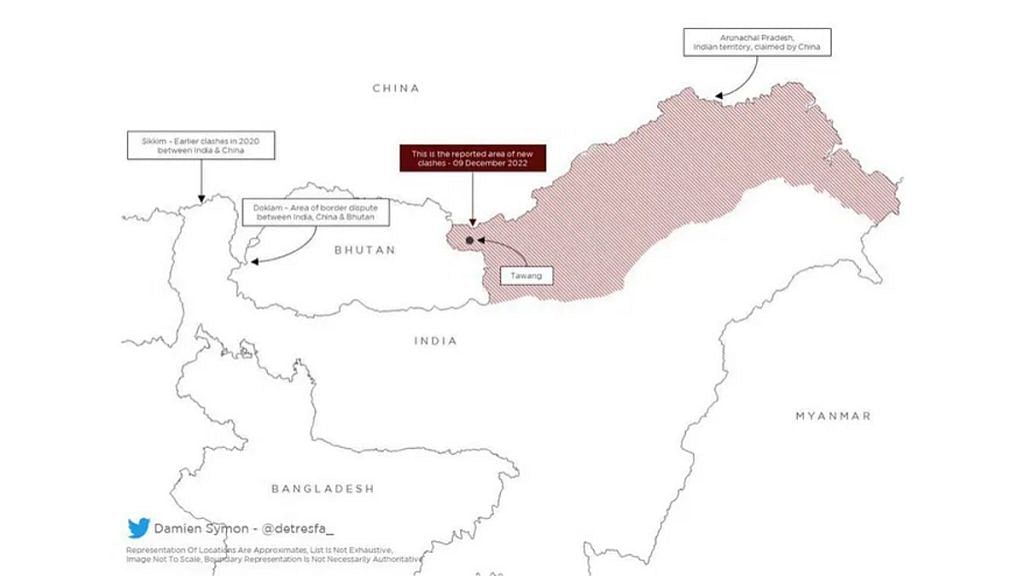New Delhi: Over 200 Chinese troops armed with spiked clubs with nails on them, monkey fists and taser guns clashed with Indian soldiers in the tense Yangtse area of Arunachal Pradesh’s Tawang sector last Friday, leading to several injuries on both sides, ThePrint has learnt.
Sources in the defence and security establishment said the clash took place on the morning of 9 December when over 200 Chinese soldiers armed with crude weapons reached the Indian perception of the Line of Actual Control (LAC), about 35 km from Tawang.
The Chinese were challenged by a group of about 50 Indian soldiers who stopped the PLA advance in an area that saw a similar clash in October 2021.
Within half an hour, the Indian backup team arrived at the spot, following which a clash ensued. This clash, according to sources, started off with stone pelting before troops from both sides engaged in hand-to-hand combat.
Sources said that while the Indian troops were not armed with taser guns, they had “everything and more than what the Chinese had” to be able to retaliate.
The Chinese were not carrying rifles, sources said, adding that they came in with wooden clubs and spikes with nails on them, and monkey fists — a crude weapon made of iron that is worn on the wrist — besides tasers.
Sources said that the PLA troops suffered more injuries since the Indian troops had managed to overwhelm the Chinese strength within 30 minutes. At least 15 Indian personnel were injured in the clash, including those who suffered fractures, sources told ThePrint, adding that the Chinese were trying to gain ‘morale superiority’ since there was a change of a particular unit of the Army deployed along front areas on the Indian side at the time.
Confirming that a clash has indeed taken place, the Indian Army in a statement Monday said: “On 09 December 2022, PLA troops contacted the LAC in Tawang Sector which was contested by own troops in a firm and resolute manner. This face-off led to minor injuries to few personnel from both sides”.
It added that both sides immediately disengaged from the area.
“As a follow up of the incident, own Commander in the area held a Flag Meeting with his counterpart to discuss the issue in accordance with structured mechanisms to restore peace and tranquility,” the statement read.
The Army added that, in certain areas along the LAC in the Tawang Sector in Arunachal Pradesh, there are areas of differing perception wherein both sides patrol the area up to their claim line as has been the practice since 2006.
Multiple sources ThePrint spoke to pointed out that the Chinese were taken aback by the swift deployment of additional Indian troops.
It is learnt that soldiers from at least two different units of the Army were involved in the clash.
Explaining the chain of events, sources said that Indian troops are less in numbers close to the LAC. These units are basically meant for patrolling and form part of the Quick Reaction Team to match the Chinese strength in forward areas if the need arises.
However, the Indian Army has a second layer of troops now, closer to the LAC, as part of the new deployment plans that were introduced since tensions first erupted in eastern Ladakh in 2020.
The clash Friday is the second major incident that has taken place between Indian and Chinese troops in this region — the first was a clash that took place at the same location in Yangtse in October 2021.
(This report has been updated with additional inputs)
(Edited by Amrtansh Arora)
Also Read: How Arunachal is front & centre in Modi govt’s massive border infra push to counter China
